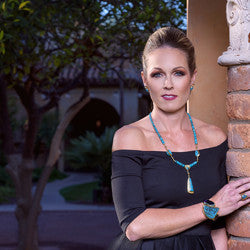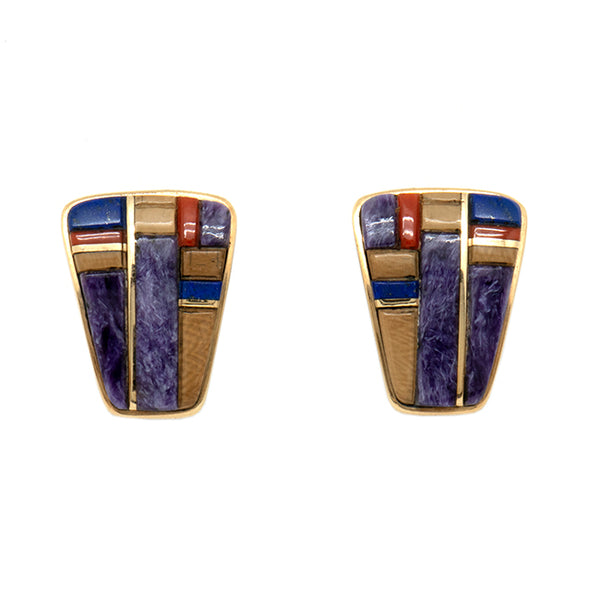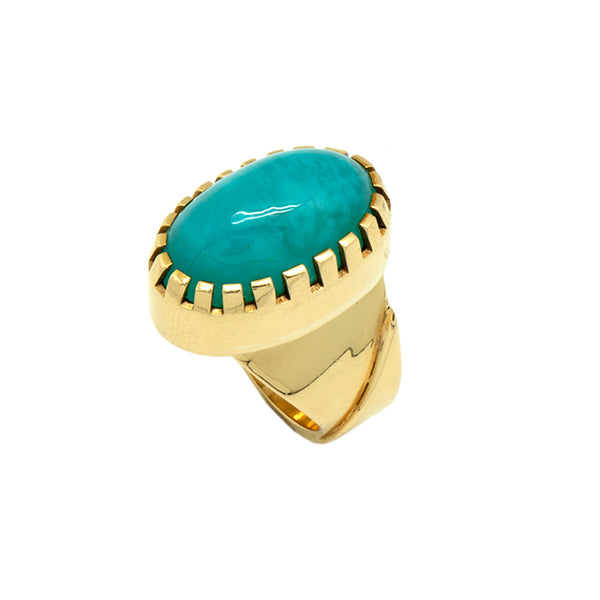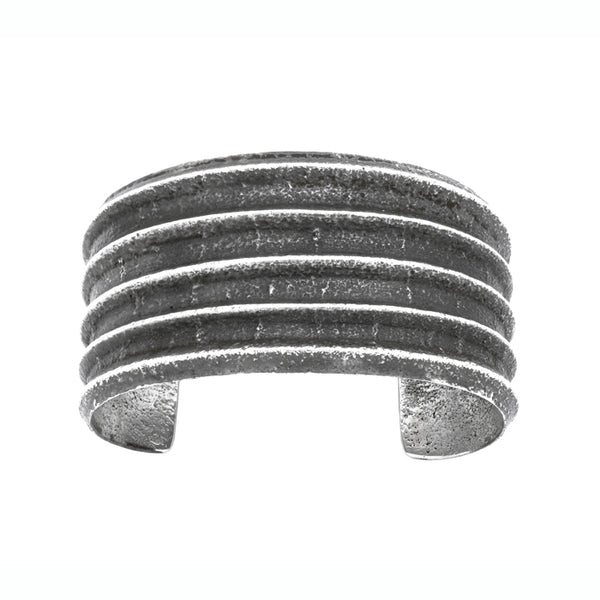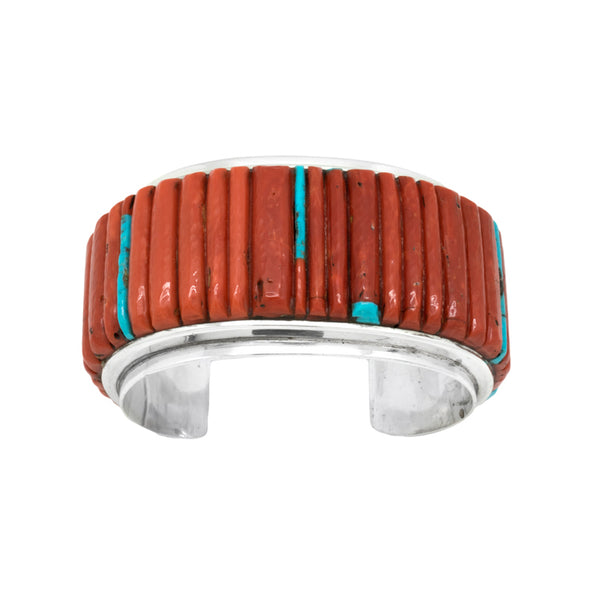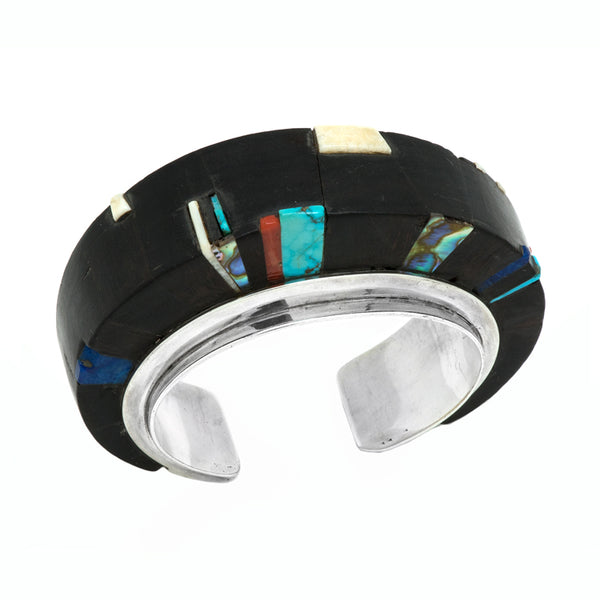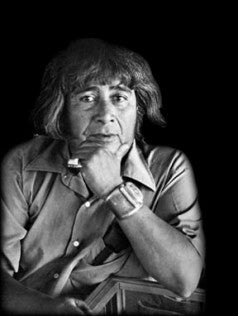
Charles Loloma was born near the little village of Hotevilla on Third Mesa of the Hopi Reservation, on January 7, 1921, the son of Rex and Rachael Loloma. He had his early schooling at the Hotevilla Day School. Later he lived with an aunt in Moencopi while attending the Hopi High School in Oraibi. There he worked under the well-known artist, Fred Kabotie. He went onto Phoenix Indian School and graduated from it in 1940. While still a student, he was selected by Kabotie to assist in the reproduction of the Awatovi murals for the Museum of Modern Art in New York. During the same period, at the age of eighteen, he worked with the late Renen d´Harnoncourt and Kabotie executing murals for the Federal Building in the 1939 Golden Gate Exposition in San Francisco. Other murals, done while in his teens, may still be seen on the walls of the Employees Club and Dormitory of the Hopi High School in Oraibi. In 1940 he illustrated the book Hopihoya by Edward Kennard, and in 1948 collaborated with him again on Little Hopi. From 1941 to 1945 he served in the army, spending over three years in the Aleutians. He married Otellie Pasivaya in 1942. Immediately following his discharge, they settled in Shipaulovi on the Second Mesa. At that time he did illustrations and murals for the Verde Valley School. Late in 1945, the GI Bill made it possible for him to begin studies in ceramics at the School for American Craftsmen at Alfred University, in Alfred, New York. There he received a fellowship from the Whitney Foundation for the research in ceramics on the Hopi Reservation. He worked on this project from 1949 to 1951. In 1954 he and his wife opened a pottery shop in Scottsdale, becoming the first tenants of the successful Kiva Craft Center, founded by Lloyd Kiva New.
It was in 1955 that Loloma began turning his creative efforts toward jewelry, and gradually this new art form took precedence over the popular pottery line of Lolomaware. During the six-year period he had the shop, he devoted his time to teaching at the University of Arizona, Tucson, at Arizona State University at Tempe, and at their summer extension courses in Sedona. In 1959 he took part in the initial conference, which launched the Rockefeller Foundation’s Southwest Indian Art Project at the University of Arizona, and was an instructor for its three succeeding summer sessions. In 1962, with the founding of the Institute of American Indian Arts in Santa Fe came the realization of a long time dream he had shared with Lloyd New, a school directed toward helping Indian students find an individual expression of their cultures through the arts. He and New were appointed heads of the Department of Plastic Arts, as well as the Sales Department where student work was sold.
Despite the demands of full time teaching, he continued working on his jewelry, and in 1963, had a very successful Paris show. By 1966 he was able to devote all of his time to his art and began construction of a studio and gallery on a rocky knoll near Hotevilla, commanding a panoramic view of the valleys and mesas of his homeland. Rooms have been added on the main structure many times since then, and a house for his niece and her family was completed across the road.
His jewelry became internationally known and pieces can be found in the collections of many distinguished persons, including Mrs. Dwight D. Eisenhower and Mrs. Frank Lloyd Wright. In the 1960’s, President Lyndon B. Johnson commissioned pieces to be presented to the Queen of Denmark and the wife of the Philippine president. During the sixties, Loloma won First Prizes seven years in a row at the Scottsdale National Indian Arts Exhibition. In March 1970, he was on the arts panel for the First Convocation of American Indian Scholars at Princeton University. He was included in the 1970 book, Objects: USA, and the resulting exhibition, which toured the country for several years. In 1971, he had his second Paris show, and in December of that year, a one-man show at the Heard Museum in Phoenix. He was featured in the 1972 NET film “Three Indians” and was the subject of the 1074 PBS television film “Loloma”, narrated by Rod McKuen. In June 1973, he was the keynote speaker for the American Craftsmen Council convention in Fort Collins, Colorado. Later that year, his work was exhibited in Houston, Texas, and the following January through March, at the Museum of Contemporary Crafts in New York. He was appointed to a three -year term on the Arizona Commission on the Arts and Humanities in the fall of 1973. He was a board member of the American Indian Historical Society of Princeton University and of the American Indian Center for Living Arts in New York. In late 1974, under a National Endowment for the Arts program, he spent five weeks as Artist-in-Residence in Japan.
None of this worldly acclaim, however, has deflected him from his work or estranged him from his native culture. He continued to have a deep reverence for Hopi beliefs and the ceremonies, which express them. In the midst of his successful 1971 Paris show, he flew home so that he might take part in the Bean Dance. He lived by the Hopi calendar, its cycles of birth, death, and regeneration. In autumn, the fields behind his studio were filled with ripening squash and melon, and on the crest behind it, he was found with relatives roasting corn to provide for the winter ahead. There is a seeming disparity between this way of life and the sophisticated world in which he moved. His answer to this was: “We are a very serious people and have tried hard to elevate ourselves, but in order to create valid art, you have to be true to yourself and your heritage”. He also said: “I felt a strong kinship to stones, not just the precious and semi-precious stones I use in my jewelry, but the humble stones I pick up at random while on a hike through the hills or a walk along the beach. I feel the stone and think, not to conquer it, but to help it express itself”. Charles passed away in 1992.
Biography from “American Master of Stone”.
